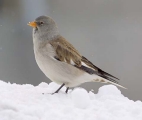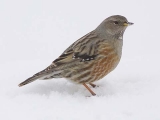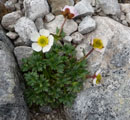 |
|
|
|
|
|
|
As species respond specifically to changes in abiotic factors, interactions between species will also change. |
|
|
|
There is substantial evidence that plant-plant interactions contribute to the mechanism by which environmental change affects the development of plant species and communities. |
|
Competition Competition is thought to be a major component in changes caused by several aspects of global change, e.g. invasion of alien species or N deposition. Also, the range retraction at the low-altitude range limit of some species (e.g. Ranunculus glacialis fig. 1) and vegetation changes within snowbed communities are most likely due to increased competition. |
1 - Ranunculus glacialis (303K) |
|
|
|
Pollinators, herbivores, predators, and pathogens Consequences of global change are probably quite different for pollinators and pollinated plants and between predators and prey so that these species interactions may be partly interrupted in future. For example, the Bogong moth Agrotis infusa, a migratory moth in Australia spending the summer in the Australien Alps, doesn't seem to be affected by climate change or is now arriving even later than before, whereas insectivorous predators now tend to arrive earlier leading to a mismatch in timing between different trophic levels. Snowfinch (Montifringilla nivalis) and Alpine accentor (Prunella collaris) forage mainly on arthropod fallout on snowfields, so a seasonal and areal reduction of snowfields will have negative consequences for these species. |
 2 2
 3 3
 4 4
|
|
2) Bogong moth (Agrotis infusa) (180K) |
13 August 2018 |
||
| |
||
